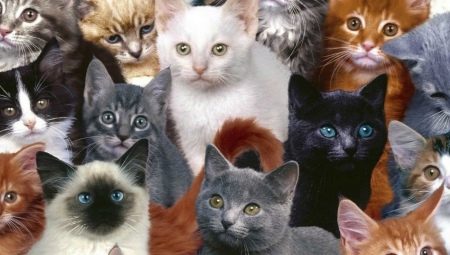When people talk about a cat, a strictly defined image arises in their head. But this image is not always true. After all, the variety of cat breeds is very large, and they are all so different.

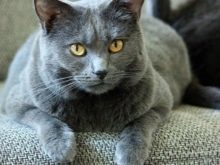
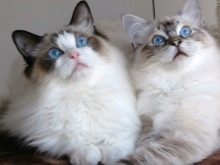
How many breeds exist in the world?
It is believed that more than 200 varieties of purring beasts have already been bred. But to accurately determine this number is not possible. Many breeds are very similar to each other, others are a thing of the past, and some are just being created. Almost all types deserve attention. But in order to eliminate problems with the description of domestic thoroughbred cats of new and old varieties, it will be necessary to introduce the correct classification.
It should be borne in mind that even about 200 years ago, the very idea of cat breeds did not exist. Animals that differ in specific external features and characteristics that allow them to be classified in a certain way are now included in the thoroughbred group. But simple external properties and behavior are not enough. You will have to use special documents confirming the right of reckoning to the breed. This can be a detailed pedigree or an official certificate.


Only a felinological organization or association is entitled to register breeds. Since approaches and criteria can vary greatly, each structure identifies a different number of animal types. It is important to remember that the proportion of thoroughbred pets is small. In general, on our planet, breed affiliation of a maximum of 2-3% of individuals is registered.Even fewer are recognized by all standards suitable for participation in industry exhibitions.
Modern felinologists agree that most domestic cat breeds were bred purposefully, and only a few of them were the result of random mutations. Separate varieties are also known (including the famous Angora), which were obtained relying on isolated local animal populations directly in the respective areas.
Hybrid types obtained during the hybridization of domestic appearance and small wild cats deserve special mention.
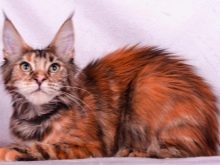
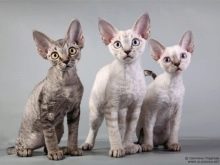
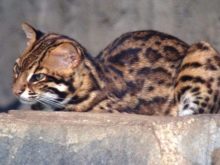
Classification
First of all, cats are distinguished by their composition (weight and body geometry). There are massive individuals with a large round head. This is what the Persians and shorthair specimens look like. The average size is typical for:
- Siamese breed;
- eastern shorthair;
- Angorok.
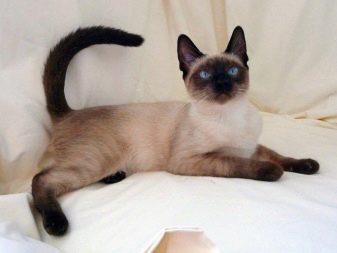

By type of wool
The next item in the description of the cat's appearance is its hairline. Many people like fluffy long-haired animals. Also distinguish:
- Shorthair
- half-long-haired;
- covered with curly hairs;
- wirecoat;
- hairless cats.
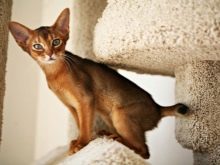

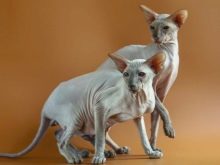
Plush animals combine good looks and powerful intellectual abilities. A particularly short and very thick fur gives the impression that it is not a living creature, but something like a soft toy. It is not surprising that this type is considered an excellent decoration for any house or apartment. Importantly, plush individuals are also distinguished by their unusually loyal character. They are not prone to aggressive behavior, however, they are extremely nervous about the attempt on their territory.
But it is important to understand that each plush breed is very different from the others and should be considered individually. Therefore, it is not enough to limit oneself to acquaintance with photographs and basic names. It is required to carefully study the behavior.
Examples of plush breeds include:
- Shorthair British;
- short-haired exotic;
- scottish fold;
- Persians;
- manksov.
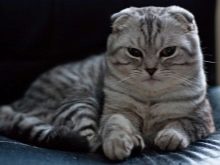
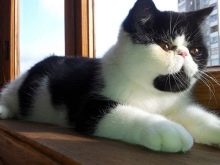
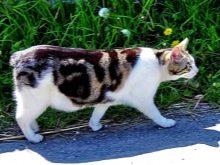
Cats without undercoat deserve a separate discussion. These include:
- canadian sphinxes;
- Don sphinxes;
- Peterbalds;
- Cornish Rex
- Devon Rex.
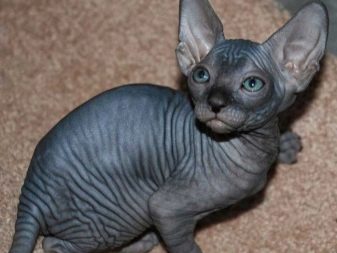
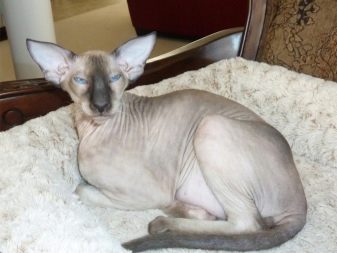
By distribution
Traditionally, such cat breeds live in Russia:
- Siberian
- Russian blue;
- Ural Rex;
- Kurilian Bobtail;
- Ussuri variety.
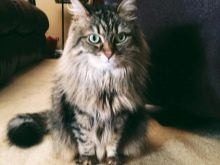
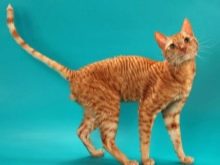
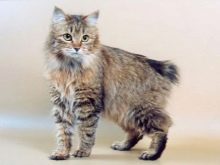
In our country, they tried to breed animals on the basis of "rootless" individuals. Sometimes they were crossed with wild specimens, which immediately reflected on the appearance and on the behavior. Russian native cats usually have a not too long pedigree. The only exception is the Siberian type. It is extremely difficult to find an individual whose background has been traced back more than 4 generations.
For this reason, many felinologists believe that domestic branches of the felis species have not yet fully settled down. Very often pedigreed kittens in the Russian Federation are sold without documents. Therefore, there is a great danger to buy an animal of questionable quality.
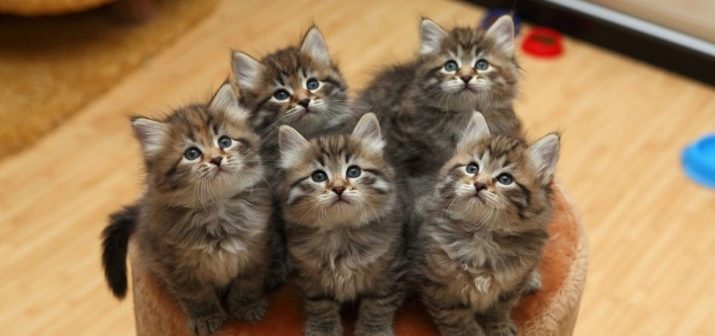
Of particular value are Russian blue cats, which were bred without the help of breeders, in many ways spontaneously. A separate discussion deserves the Georgian breed.
It got its name for the similarity of appearance with stereotypical ideas about the appearance of the nation of the same name. In the descriptions, the first place is occupied by a characteristic large nose. Otherwise, these pets are very close to the Siamese variety. “Georgians” make contact with people and other living beings without any problems. They are characterized by high emotional sensitivity, a desire to correct the bad mood of the owners.
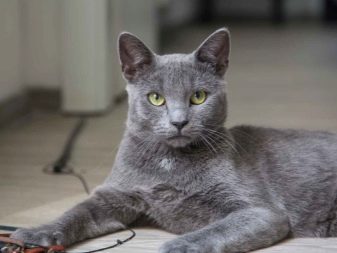
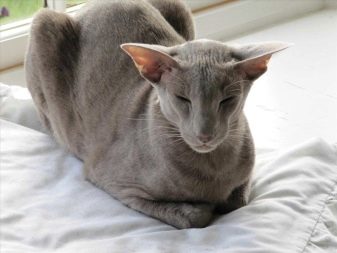
Color allows you to divide cats into:
- multicolor;
- monochromatic;
- marble;
- covered with stripes;
- having marks.
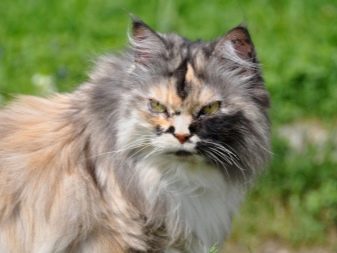
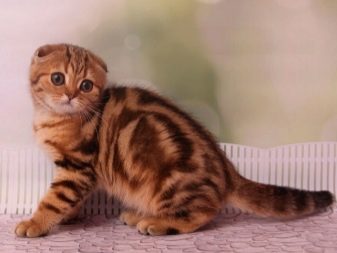
If we talk not about specific breeds, but about the total number of cats, then the leaders are in their number (in increasing order):
- Japan;
- Ukraine;
- Germany;
- England;
- Italy;
- France;
- Brazil;
- RF;
- China;
- USA.



Which breed is considered the oldest?
There can be many different answers to this question. Until now, there is no exact information about which cat was bred orderly before other types. But there are several varieties that claim this title. Among the oldest breeds, the Turkish Angora (or simply Angora) is deservedly called. There is documentary evidence of its existence in 1600.
However, there is evidence that apparently similar individuals were found 200 years earlier. Some experts even believe that it was Angora cats that got the longest hair before others, and other breeds with a similar property received the corresponding gene from them.
Contrary to the epithet "Turkish", in fact, the breed was developed in Iran. First of all, local developers tried to improve the condition of the Persian coat.
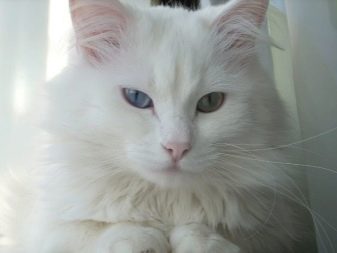
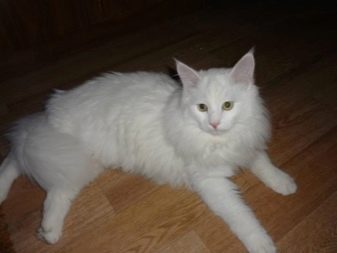
The mentioned version is not the only one, and even some professionals adhere to other points of view. Much more important is the fact that Persian cats also claim special antiquity. They are characterized by a large length of wool. Those old European species of cats, which were described as longhair even in the 15th century, are often considered the ancestors of the "Persians". But in general, this whole story is very dark and confusing, it is extremely difficult to understand it.
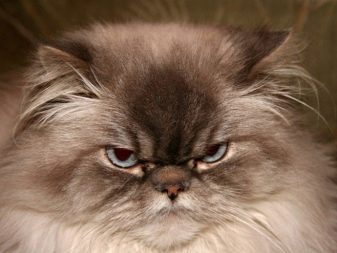
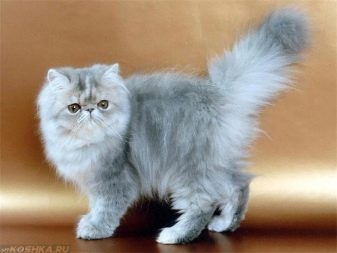
It appeared a long time ago Siberian forest (or just forest) cat. This breed has been actively bred in our country for several centuries. Some experts believe that it is from the Siberian branch that all long-haired individuals come from.
However, such a version did not receive much popularity. But biologists have established another important fact - the Trans-Ural and Norwegian branches are closely related.
But "Norwegian" It is definitely one of the oldest varieties in Europe. According to the dominant version, just such animals were brought by the Vikings from distant wanderings to Europe at the beginning of the XI century. When adapting to sharply changing conditions, the animals appeared elongated, impervious to liquids.
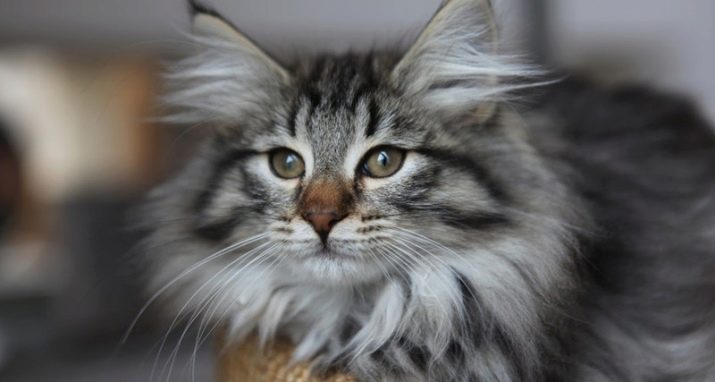
Well, a little later in Siam (modern Thailand) there was a branch of tailed, named just after the country. The first written references to accurately identify Siamese cat appear no earlier than 1350 and no later than 1767. Then no one suspected, of course, how important later accurate dating of the appearance of the breed would be. But the surviving illustrations to old books allow us to accurately identify the similarities of “those” animals and modern Siamese.
In exactly the same time period (1350-1767) another Thai breed appeared - Corat It is unlikely that experts will ever figure out which of this pair arose earlier.
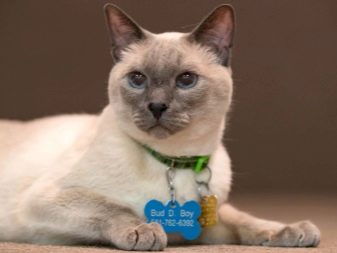
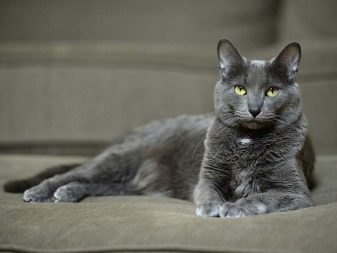
But if the origin of European and Asian varieties seems confusing, then in comparison with the origin of the Abyssinian type, it seems to be a standard of clarity and transparency. There is a point of view that for the first time such a breed was bred in ancient Egypt. Proponents of this approach like to refer to visual similarities with images and ancient artifacts.
Abyssinian individuals of a modern sample are greatly changed compared to old specimens. When breeding them, crosses with Russian blue and Burmese breeds were used.
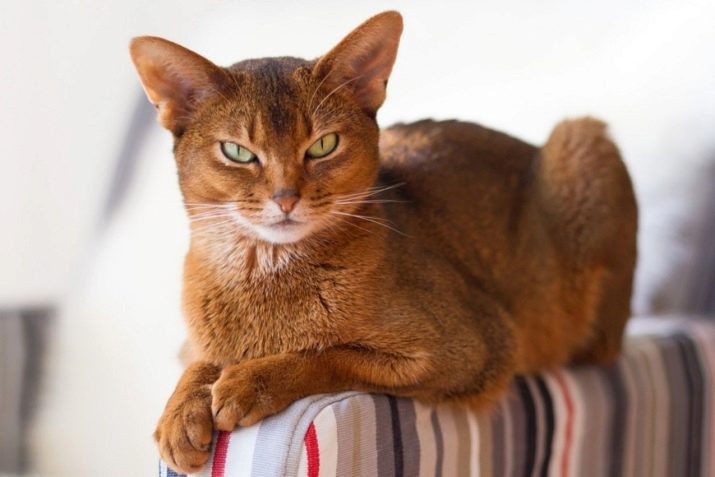
And another breed that claims to be superior to other cats is the Egyptian Mau. It is characterized by a natural color (replete with spots). It is believed that Mau has not changed its appearance over the past 3 millennia. Moreover, even more ancient images showing exactly the same cats have been preserved. Experts believe that such animals were used for hunting (for the first and last time among domestic cats). This is evidenced by the following characteristic properties:
- excellent running speed (over 55 kilometers per hour);
- amazing hearing;
- highly sensitive sense of smell;
- excellent vision;
- lack of the slightest fear of water;
- a pleasant melodious voice that helps the hunter to determine that the pet was near prey.
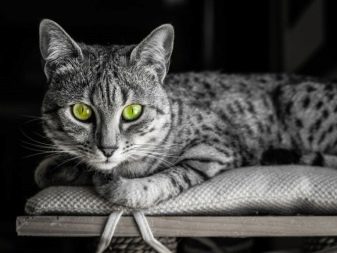
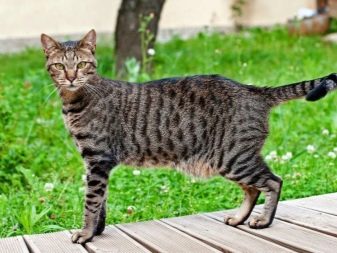
List of cats with non-standard appearance
Both old and new breeds can look completely ordinary. But not everyone prefers such a standard sample. It is useful to know which animals stand out in comparison with other atypical appearance. Talk about feline representatives can begin with an exotic shorthair variety. She is even given the nickname "lazy Persian."
Shorthair exotic more affectionate than it might seem in appearance. Caring for it is very simple, and the weakness of molting plays an important role here.
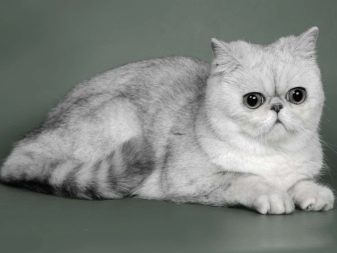

But if you need an even more exotic creature, you can look at the breed Selkirk Rex. This is a relatively new type, distinguished by curly hair. Moreover, unlike other curly cats, it is very large and has a heavy bone system.
A characteristic feature of Rex with long hair are very pronounced curls. It may seem that the hair is "poorly styled."
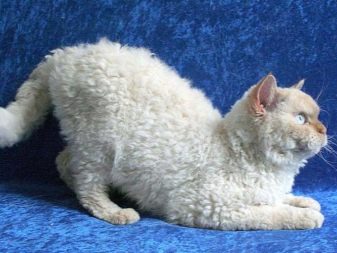
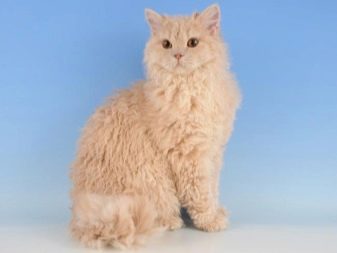
But ocicat stands out for a completely different feature of appearance - it is painted very brightly and has expressive spots. At the same time, the oocyte was not brought out purposefully, but as a result of some strange accident. Although the cat can be perceived as temperamental, in reality it has a strong affection for the host families and a manual disposition.
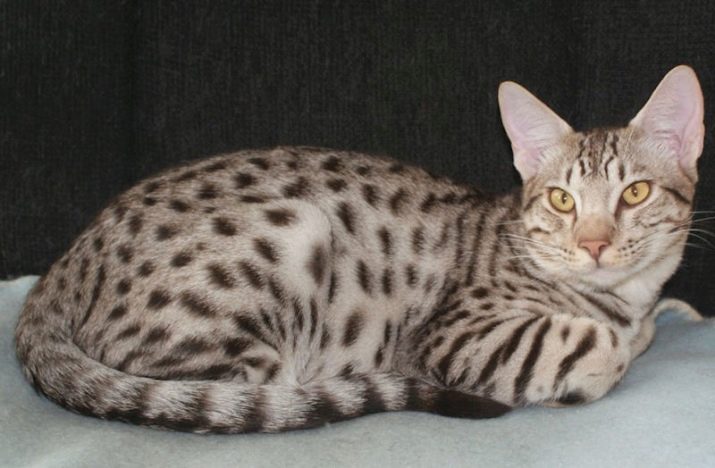
If you need to choose a cat with a short tail, then you should pay attention to the Japanese bobtail. The miniature tail is completely unique in that each individual is strictly individual. This is about the same as fingerprints in humans.
If we pay attention to the “opposite end”, that is, the head, it will be difficult to ignore high mountain breed. It is recognized very easily - by the characteristic twisted ears. The high mountain branch was launched only in 2004. Breeders tried to make the animal as large as possible.
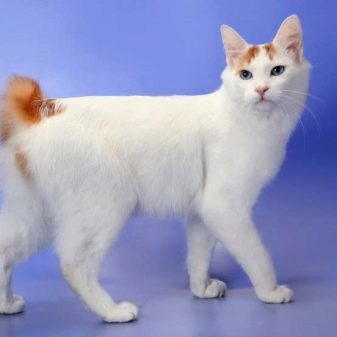

Another original option - american curl. This breed has ears turned back and a fluffy tail. The latter circumstance even allows you to compare a cat with a raccoon. At birth, curls have straight ears, and curling occurs only when kittens grow up.
Curls are praised for their attentiveness and devotion, for the desire to constantly be with people and to know everything that is happening around.
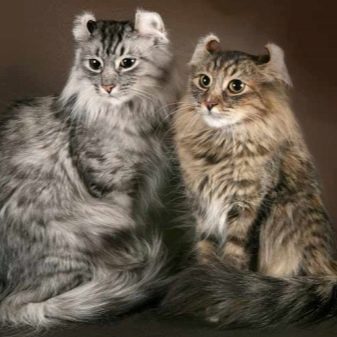
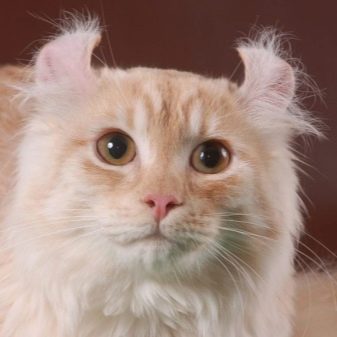
Trying to choose short-legged animals, you can give preference Minsk. These cats are practically hairless. They have no hair on the body, and only occasionally there are hairs on the muzzle. Minskians are playful and laconic.
They are distinguished by developed intellect and can find solutions to very complex (by the standards of the animal world) problems.
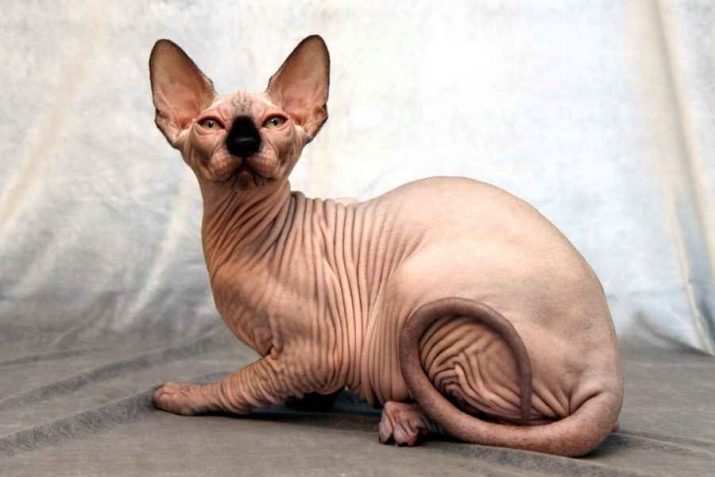
Another beautiful type is savannah. Such cats appeared as a result of crossbreeding of pets and African serval. Characteristic features of the breed are:
- elongated body;
- spots like on the skin of a leopard;
- unique geometry of the ears;
- large mass (sometimes up to 11 kg).
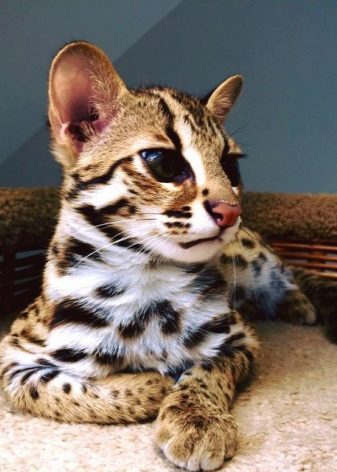

Returning to the short-footed individuals, it is worth mentioning lambkin. This direction in breeding was developed thanks to the hybridization of Munchkin and Selkirk Rex. Lambkin is characterized by curly wool, which reaches great rigidity. The small length of the paws made the cat look cute.
But because of this length, a number of ailments of the musculoskeletal system and spine may appear.
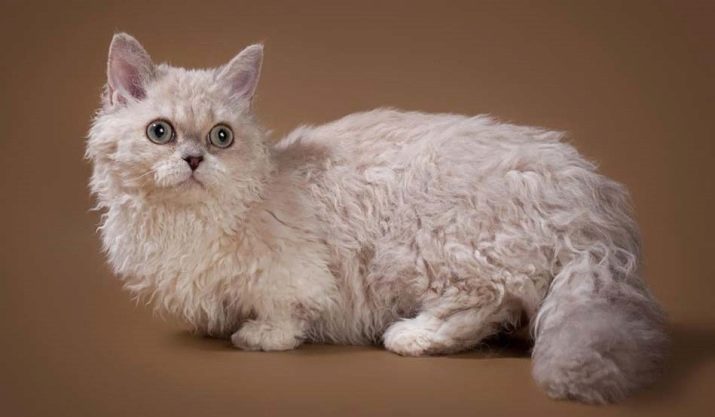
Those wishing to choose a cat with a flat face can pay attention to Himalayan type. It differs from the Persian branch only in coloring and blue eyes. Typical Features:
- chic long coat;
- open direct gaze;
- flat muzzle, looking like an exhibit of a puppet theater.
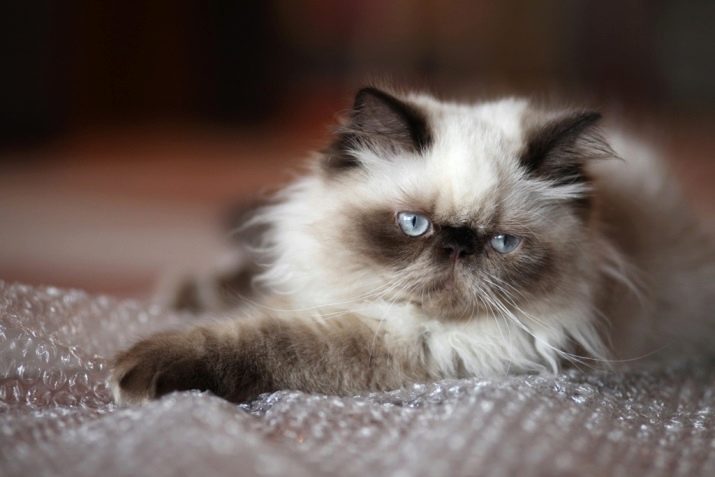
In the US state of Oregon, a completely different original breed appeared - laperm. It is recognized by its thick and curly hair, almost like that of a sheep.The very first representative of the lapermi was originally completely bald, and only later did he expressive hairline.
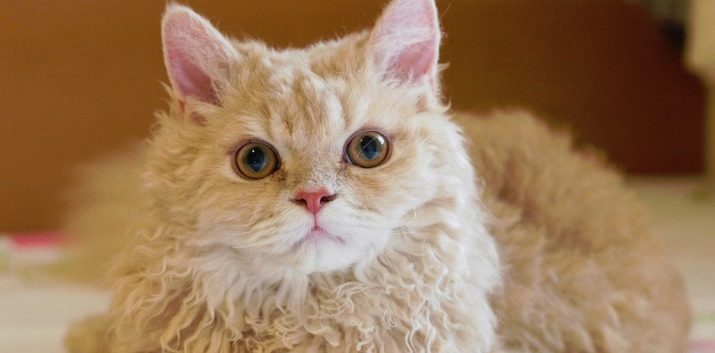
But if you set the task to choose the most original and even the most strange, frankly, breed, then one of the first places will be face. The first glance can sometimes provoke a fair amount of perplexity. The word "face" goes back to the ancient Greek "wolf".
If you handle cats calmly and patiently, over time the animals will get used to the owners and the changed circumstances.
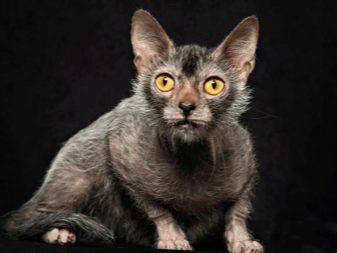
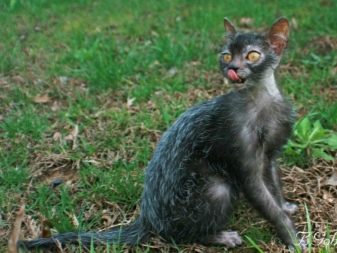
Scottish Fold can produce no less effect. They stand out:
- almost imperceptible ears;
- eyes like an owl;
- thick hair.
Basically, the ears of the "Scots" are set directly. But there are cases when they are bent forward and downward. Such a sign indicates increased stamina and the ability to quickly adapt to any situation.
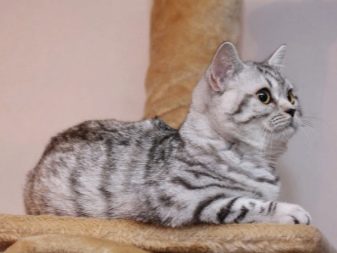
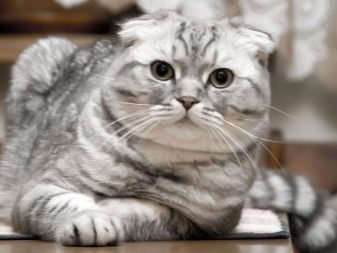
However, one should not think that only exotic breeds were bred abroad. Domestic sphinx of the Don can confidently challenge them for a number of properties. When such bald and wrinkled animals appeared, it is not known for certain. Many consider them freaks of the cat world. Probably, it was precisely this assessment that drove the unknowns who threw the cat bag in the trash in 1987 in Rostov (hence the name). The first litter also contained hairy individuals. But later all the specimens in it were exposed.
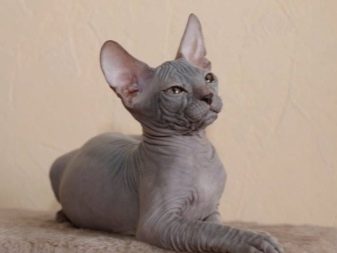
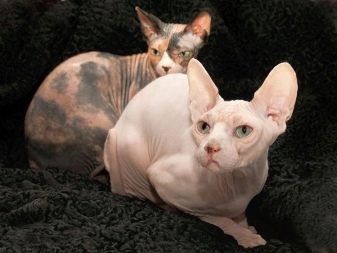
Those who are not afraid of the Don Sphinx should think about the institution Ukrainian levkoy. His eyes are simply gigantic. For those who do not own such aesthetics, their combination with a bald body looks just awful.
However, it is worth getting to know the animals better - and it will become clear that they are distinguished by their liveliness and affectionate mood. And the lack of need for grooming will please many people.

But pixibob although it requires more careful care, many people also like it. In appearance, it gives the impression of a wild animal. In reality, such a cat is easily tamed and does not ignore commands, as it may seem. Piksibobov developed muscles and a strong skeleton.
Judging by the comments of more people, this breed harmoniously combines the features of cats and dogs.
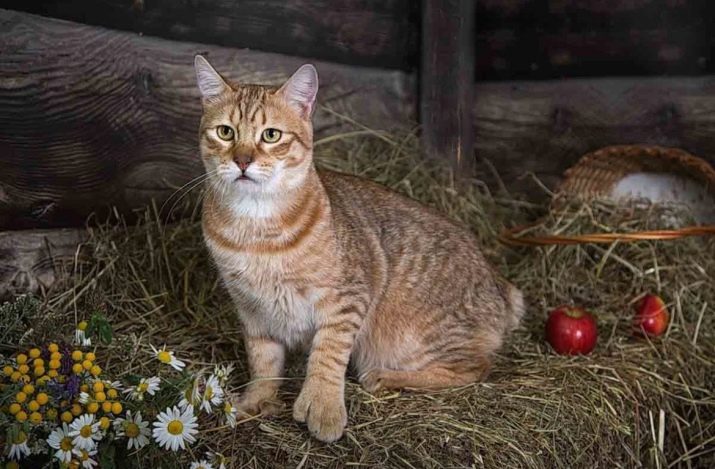
If neither pixibobes nor Don sphinxes suit people, they can pay attention to the breed peterbold. Her representatives are completely bald. The hairless body is crowned with a tiny head on which disproportionately gigantic ears are located. Petersburgers were officially described in 1988. They are not always completely bald, however, the gene that causes the absence of hair dominates.
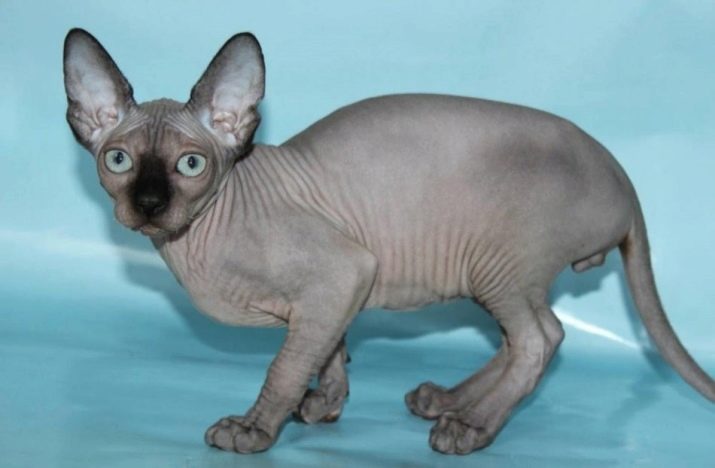
A good choice would be such an exot as Cornish Rex. It is characterized by:
- large ear size;
- short curly hair;
- general refinement of appearance.
But this decorative effect does not prevent the cat from being strong and active. The animal makes every effort to become an equal member of the family. Cornish rex was bred in the UK (more precisely, in Cornwall) by 1950. The original purpose of their use was to protect grain in barns from rodents.
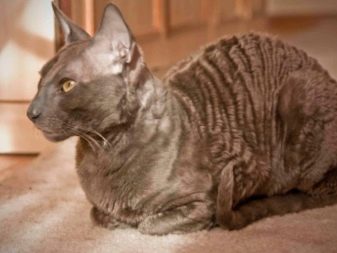
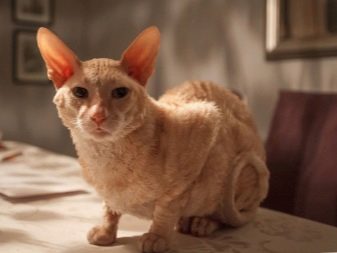
However, there is a more famous exotic breed - classic sphinx. They did not try to bring him out purposefully - everything turned out as if by itself. The breed comes from Canada. Felinologists described it in the late 1970s. The name of the variety is given because of the external similarity with the ancient Egyptian sculpture of the same name.
Sphinxes are extremely sociable and invariably attract attention.
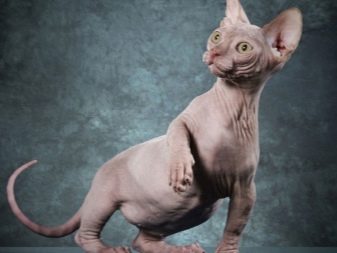
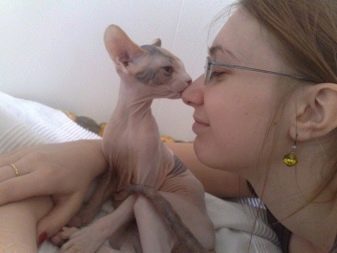
The calmest views
But an atypical appearance is not all that needs to be considered. A very important role is played by the right choice by character traits. Strictly speaking, almost any cats are calm. A lot here depends not only on character traits, but also on the situation. Pets love to imitate the owners, and this trait is absolutely indestructible.
However, you still have to carefully study the features of specific varieties to eliminate errors. Among the famous friendly breeds worth mentioning british shorthair cat. Many experts believe that such a branch is best suited for apartment breeding. Known phlegm, along with a benevolent attitude towards family members, are found at a very early age. British Shorthair:
- not prone to hooligan antics;
- require only minimal care;
- are exactly related to the whole family (without distinguishing any of its members).
The short coat of the British is arranged in a special way, in addition, it is dyed very diverse. Buying such kittens cheap will not work.
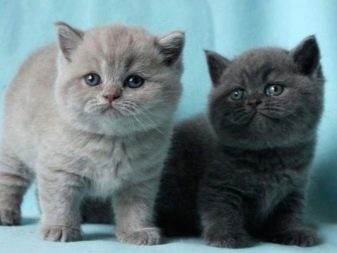
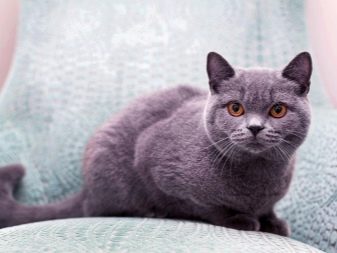
It is worth saying about another English variety of cats - ragdoll. Their name literally means "rag doll." In their hands, animals behave as calmly as possible. Ragdolls are bad for loneliness. They are gentle towards any owners. However, this breed has certain disadvantages. Among them should be called the inability to the notorious "fall on 4 legs." Throwing a cat to the floor from a height of its own height, it is already possible to injure it. Especially it will be necessary to avoid opening windows, even on the ground floors.
The cost of a ragdoll from trusted breeders with a good reputation is at least 15 thousand rubles (2019). In some cases, the price can rise both double and triple.
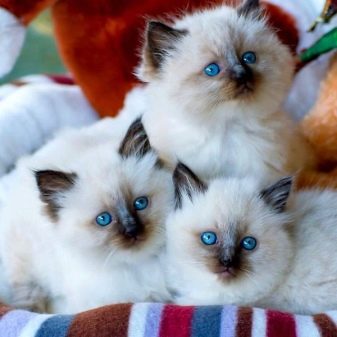
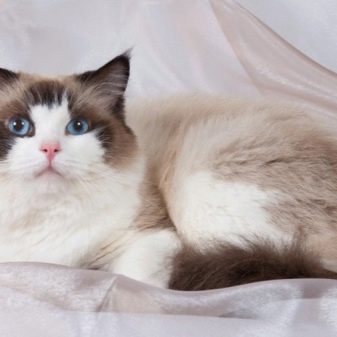
In addition to the two varieties mentioned, a common breed is and Russian blue cat. It is ideal for apartment maintenance. The animal is calm: you do not need to constantly pick it up and stroke it. But the Russian blue are tuned in to everywhere to go after the owners. They do not avoid active games, if the owners themselves offer to play. Such a cat behaves very wary towards strangers.
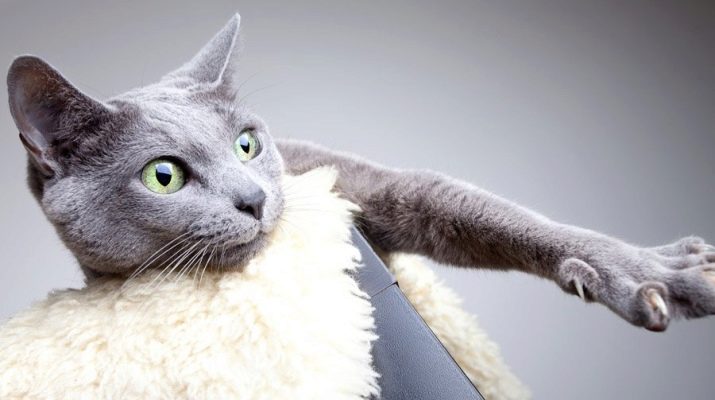
Are becoming more and more popular now and Maine Coons. Even a very large size does not prevent them from being calm in any situation. Maine-coon will be able to endure almost any childhood trick. They are characterized by superior intelligence and sociability. For a combination of these properties, the breed is sometimes called a cat-dog.
However, a significant amount of animals causes a very large need for food. And a lot of space will be required.
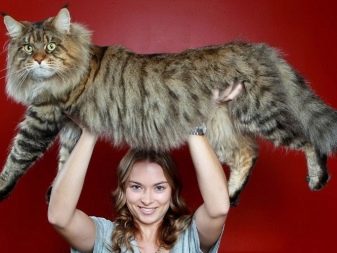

List of Evil Varieties
Going on the Internet, you can find a variety of lists, lists and ratings. There are lists of not only calm, but also “evil” cats. This word should be put in quotation marks precisely because aggressiveness is too arbitrary and depends on a large number of factors.
Moreover, the psyche of a four-legged pet and the psyche of a person are completely different things. The emotion indicated in one word in this case may not mean the same thing at all.
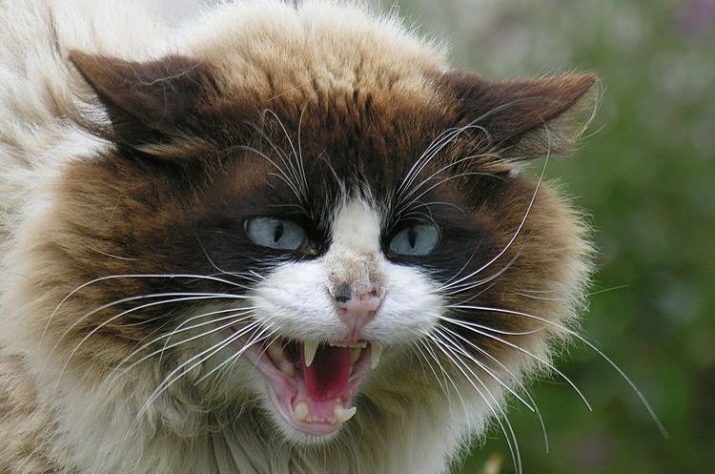
Undoubtedly, only wild cats can be called evil. They simply will not let a person in, will not fail to use their teeth and claws in absolutely any unpleasant or incomprehensible situation. Conditionally evil are individuals who are incorrectly trained or not accustomed in time to proper obedience. It is very difficult to find the "key" to Maine Coon and Pallas. But in any case, all cats and cats are individuals. If you approach on an average, starting from the real experience of a large number of people, then by spite you can distinguish:
- Maine Coon;
- the savannah;
- Scottish cats;
- manulov;
- reed and balinese cat.

The popularity of Maine Coon does not allow him to be considered the least malicious on this list. As already mentioned, everything is too individual. But it is important to consider the root features of the breed. Maine Coon requires a systematic walk. The hunting nature of this animal makes getting rid of an excessive supply of energy extremely urgent.
Do not expect such a cat to caress the owner and, lying on his lap, sweetly rumble.At least for the reason that Maine Coon does not fit on any knees. But such a pet will be delighted with water procedures. We must be prepared for the fact that he will try to use a bowl of water as an impromptu bath. And the fact that water as a result spills throughout the apartment does not really bother him. Like dogs, such cats are truly delighted when they dig the ground.
If the land is inaccessible, use everything that only falls under the paw — upholstery of upholstered furniture, clothes, shoes, wallpaper.
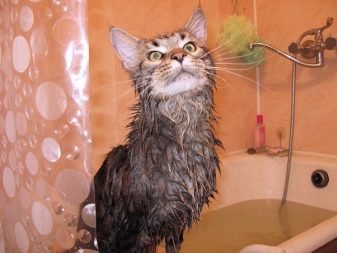

Concerning balinese cat, then she is distinguished not only by an aggressive disposition, but also by her amazing ability to explore everything around. Such animals are simply not able to remain alone and tolerate these situations very poorly. Balinesis are very talkative, and it is imperative to be able to recognize what emotions they experience. The hyperactivity of balinesis means that before you leave them alone at home, you need to remove as far as possible:
- all beating;
- brittle and fragile objects;
- cutting tools.
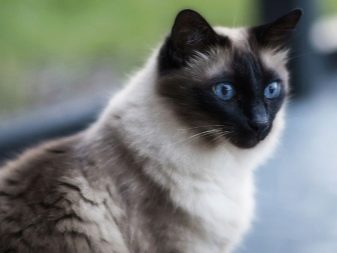
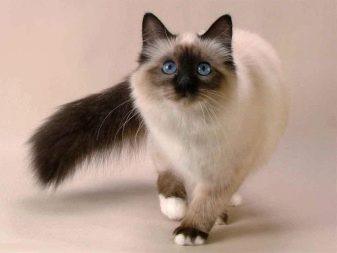
As for the British cat, in its character the evil notes are shaded by mystery and poor predictability. The descriptions indicate that the British:
- are independent;
- proud
- able to show restraint;
- sometimes stubborn;
- can be prudent;
- able to endure unpleasant situations and problems for a long time.
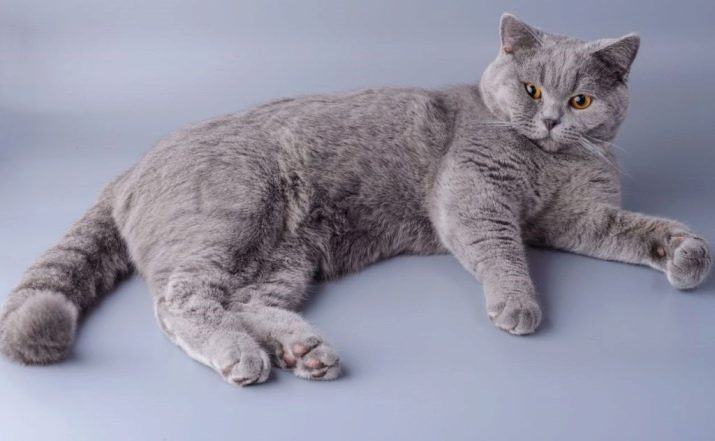
Summarizing these features, we must indicate that english cat is still pretty good. If approached correctly, the pet will be happy with the host society and calmly, even happily spend time in his arms or on his knees. But if you do not observe the measure and violate the personal boundaries of the animal, you can encounter aggression. It is the careless owners who do not know their pets well who are the main contingent of writers of negative reviews.
This breed must not be taken for stiffness. - squeezing a kitten at an uncomfortable moment, it is easy to feel the strength of its claws and teeth. The "British" are most happy when their masters keep themselves on an equal footing and do not try to dominate.
To make the animal more compliant, it is worth picking a long-haired individual from the very beginning. They are considered more balanced than their shorthair counterparts.

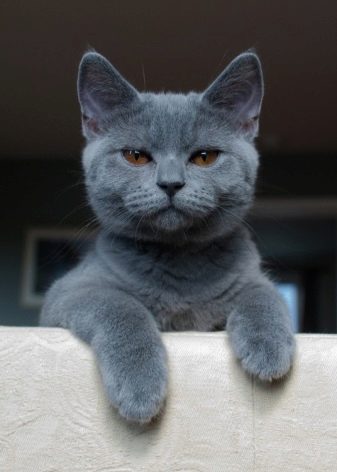
Scottish cats are also listed quite evil for good reason. Some breeders unreasonably advertise them as "real angels", which is not always true. A predator is a predator, and the mighty commandment of instinct will sooner or later make itself felt. The direct customer reviews of the “Scots” are contradictory, and it is extremely difficult to predict what kind of character a particular animal will have. The negative properties of the breed are:
- obsessive demonstrativeness (love of situations when the audience focuses on the pet);
- tendency to rivalry (as a rival for the attention of people the cat will perceive any other animal);
- stickiness (some Scottish cats shamelessly ignore personal space, trying to go everywhere to look after the owners);
- excessive perseverance (individual “Scots” only learn under the influence of very strict and consistent measures what the word “no” means).
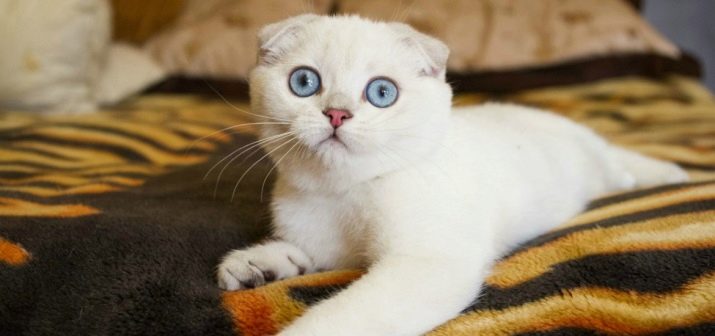
But if you look for a cat that claims to be the leader in anger, then the most accurate option will be the manul. This species is superior in aggressiveness to the “Scots” and the “English”, and all other breeds. Moreover, it simply cannot be domesticated by any measures. Pallas are not attached to a particular owner, and even the person with whom they are in constant contact can suddenly receive serious injuries. Moreover, people in this wild cat are instinctively recognized as enemies.
Often animals are accepted irreconcilably to fight for their own territory. This happens even when there is no real danger. Manul can be kept only in reserves and other specially designated places.There professionals work with them who know exactly how to eliminate aggression. For the same reasons, reed cats are not suitable for home breeding.
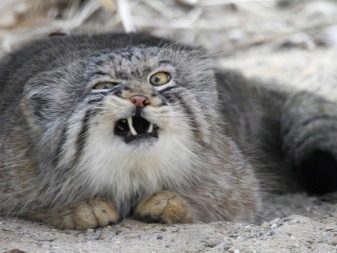
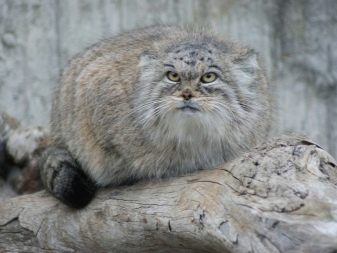
The cat savannah gives a little greater perspective. This is a transitional link from wild to domesticated animals, and therefore we must be very strict in working with them. Savannahs are more relaxed than manuls, referring to the presence of people around them. However, they are primarily recommended for maintenance in the aviary. There it is easier to maintain the required distance, and therefore exclude the manifestation of aggression.
Savannahs can jump 2.5 meters in height. Therefore, the owners will have to spend money on arranging a durable and stable fence. The animal gets used to people rather slowly, at first contact with someone new is complicated by distrust.
Conclusion - such a cat is not suitable for those who are used to often bring guests to their home. In such a situation, the animal sometimes tries to recapture its territory.
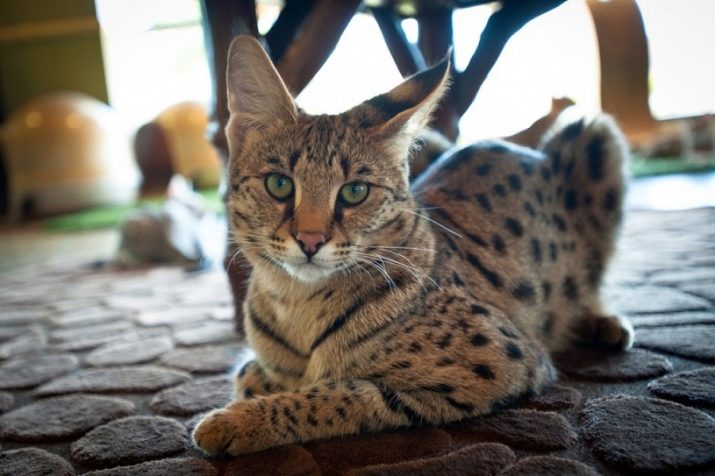
Growing up, the savannah runs wild more and more. Conflicts may arise with those family members with whom the animal had previously been in quiet contact. The unpredictability of the behavior of this breed makes it unsuitable for families with small children. It is very difficult to predict how an acquaintance of such a cat with ordinary kittens and puppies will end. In the worst case, the hunting instinct will fully work.
But savannah aggression should not be absolute. They are not angry because of natural harm. Strong assertiveness is manifested in situations where there is a danger or you can embody yourself as a predator. Just to separate the evil animal and the object of its anger is not enough.
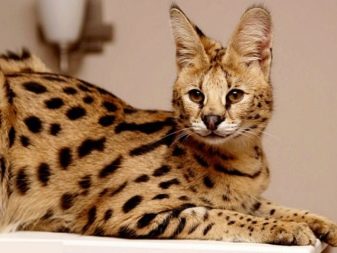

Many cats accumulate nervous tension even when they simply look at the “enemy” from the window, and sooner or later this tension will splash out.
Intraspecific aggression occurs when a new cat appears in the house or in the yard. It may be an animal that has long been forgotten by a pet. An even more powerful causative agent of aggression against oneself is competition for resources. But there is still redirected anger, which is dangerous due to misunderstanding by inexperienced owners. Sometimes, in the absence of obvious reasons for the attack, the cat clings to a person or another animal and does not let go.
Usually the root cause is a state of frustration. For example, the same impossibility of "truly" finding out a relationship with a true offender. Worst of all, sometimes it’s not possible to fully understand and explain the real reason for the redirected attack. Avoiding an attack during petting is much easier - just know how to handle a particular breed and how not to cross the boundaries of its personal zone. But you have to act very carefully and prudently.
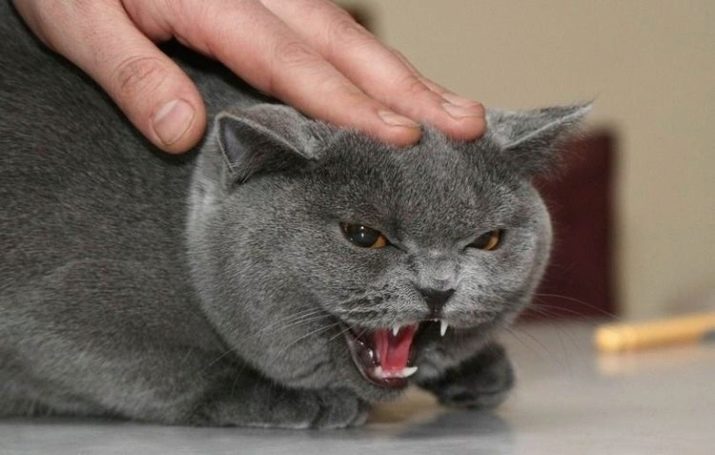
Even a short touch of pain points can cause scratching or biting. If a pet attacks the owner by touching “normal” places, especially the stomach, urgent consultation of the veterinarian. Sometimes you have to conduct a comprehensive examination.
Individual individuals simply have extremely high sensitivity. You won’t be able to do anything with this, you will only need to put up and not try to break nature.
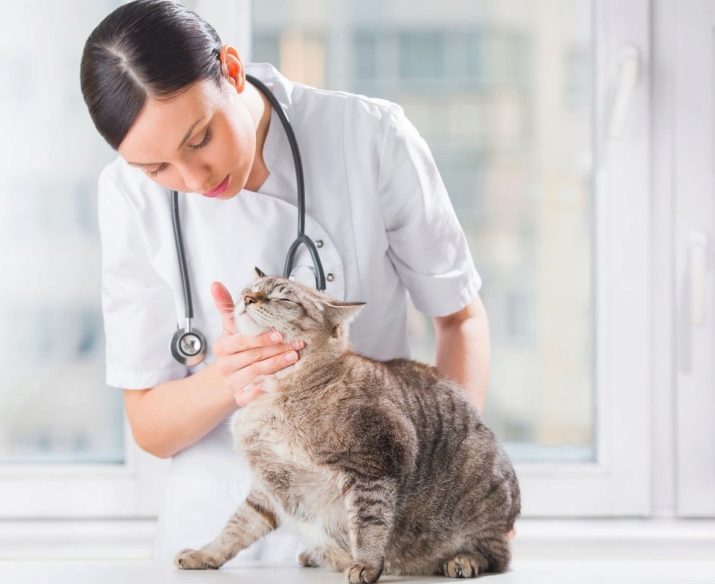
Stupid animals rating
Aggressiveness, at least in certain situations, is quite natural for such a predator as a cat. It is often believed that the predatory nature of a species determines its significant intelligence. And in fact, tracking down prey, ambushing, pursuing a victim - all this requires a certain level of mind, the ability to make the right decisions quickly. Any experienced veterinarian, felinologist or just a breeder can give a number of examples when a cat simply manipulated its owners. And yet there are separate breeds that are traditionally credited with stupidity (although everything is strictly individual here).
Problems with the upbringing and development of the necessary skills usually arise in the "Persians". Beautiful and graceful cats are naturally lazy. They play willingly, but the development of even the simplest techniques is extremely difficult. Communication between the animal and man is very poor, in most cases the pet quietly gives a voice and looks at the owner, hoping that he will understand what is required of him.
From the "Persians" will have to hide a maximum of dangerous objects (hot, sharp, heavy, energized).
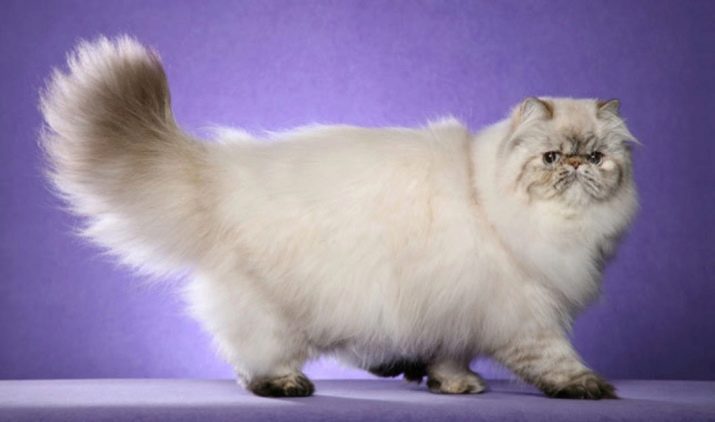
Exotic Shorthair Cats It’s also hard to consider champions intellectually. True, they are more developed than the Persian counterparts. Exot can well be trained in various teams, but they will have to be worked out many times. Bans will also have to be worked out properly. Sometimes there are problems with accustoming exotic kittens to pots. Without continuous attention, even an adult exot can manifest a characteristic reflex anywhere.
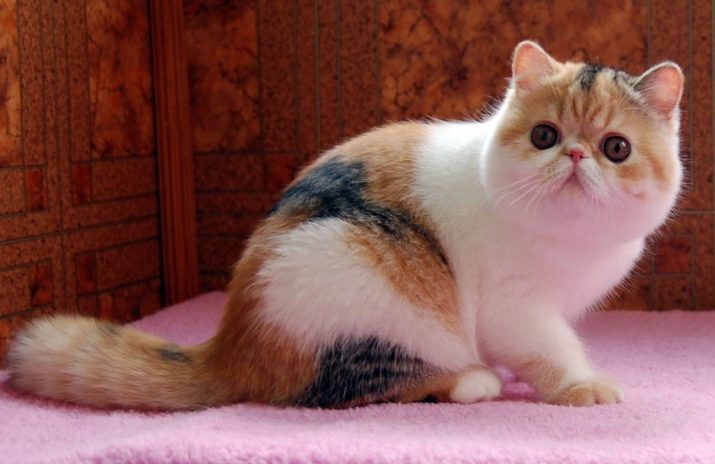
Kurzhaars or American Shorthair cats quite simply master the entry-level orders. But to reach the next level of training is possible only with great difficulty. Kurtshaaru tend to communicate with the owner through facial expressions.
It is very difficult to break his hunting stereotypes. Starting to move chaotically, peeling furniture and clothes, the pet sometimes ignores all attempts to temper him.
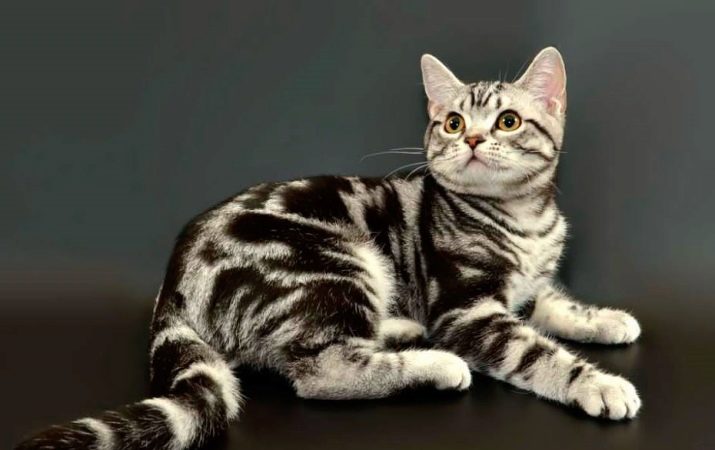
Devon Rexes are slightly less intelligent than Kurtshaars. No effort of trainers will help them master any complicated teams. Devon Rex tends to penetrate far corners and inaccessible places. The dangers are ignored. Forbidden teams do not give much result, even if they are worked out flawlessly.
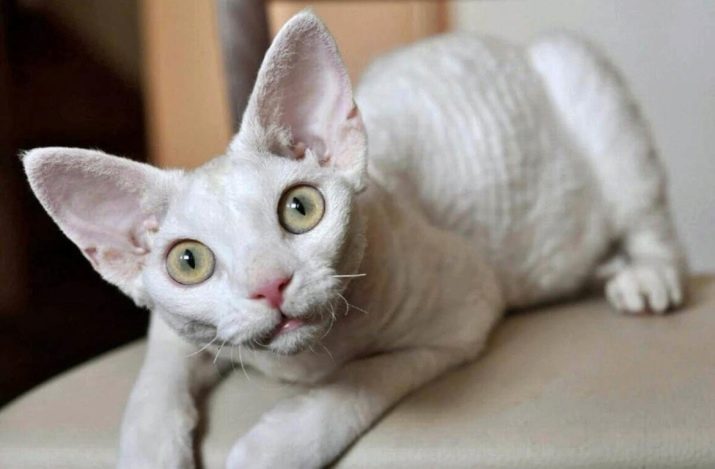
Best loyal cats
Knowing the intellectual level of the future pet is certainly important. But it is no less significant to imagine which one will be the most loyal to the owner. By innate devotion, the Mekong Bobtail is considered the leader. They are always attached not to the house, but personally to people. The pet will look directly into the eyes, which allows him to understand human intentions without any problems. Mekong will go after the owner, regardless of the circumstances. Neither loud sounds nor obvious danger will stop him.
Moreover, the bobtail calmly walks on a leash. This compares favorably with most cats, which perceive the leash extremely negatively.
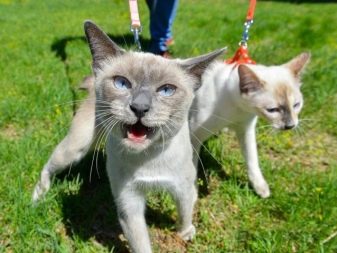
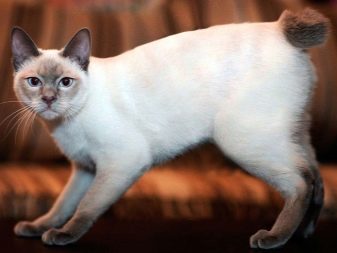
Maine Coons are also considered loyal animals. They tend to take care of children. Maine Coon, due to its ability to establish contact with other living beings, will delight real nature lovers. In this case, a particularly delicate nature eliminates any obsession. Thinly feeling the situation, Maine Coon will not attract too much attention if the owner is busy.
The caution of the breed can also be considered an addition to its devotion - the beast will not release its claws into the owner, even when there is a gambling outdoor game.
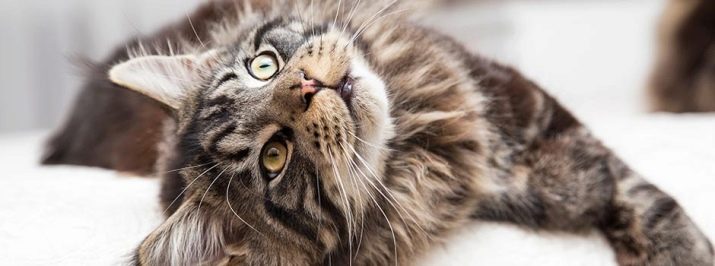
If you start from the opinions of breeders, we can say that Abyssinian cats are not inferior to the Mekongs and Maine Coons in fidelity. Without problems, recognizing the desires of people, the cat will calmly and without obstinacy fulfill them. He is inclined "to follow the owner like a thread by a needle." As much as possible, the Abyssinians help.
Interestingly, they do not even need to give a command - participation in any occupation of a person is subjectively important for them.
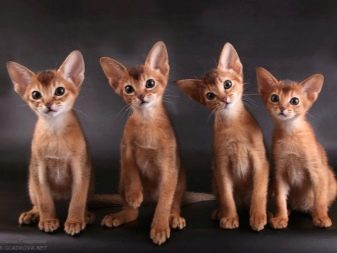

Kuril Bobtail is also ready to become an inextricable shadow. At the same time, escort takes place without unnecessary obsession, as modest as possible. The Kurilets himself decides who he should be considered the master and who is not. But if the choice is made, then there is no doubt in the loyalty of the pet until his last breath.
This breed is very well trained and obedient, without any problems mastering the presentation of objects.
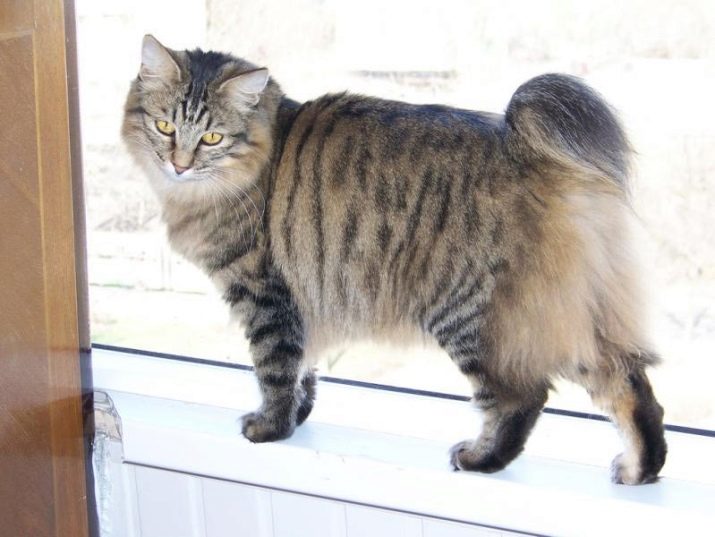
It should not be thought, however, that only beautiful and graceful feline representatives are tightly attached to people. Neva masquerade cat, despite the severity of appearance, is distinguished by tenderness and behaves kindly. When such a pet is in children's hands, it shows extraordinary restraint. The release of claws is excluded, even if the cat is tortured because of the game. Neva animals calmly move with the owners to new addresses, no matter how difficult it may be.
Finding himself temporarily alone or just waiting for the owner, the cat from the banks of the Neva will not get bored and meow plaintively. Observing that the owner is very busy, she will not try to attract his attention, will not require affection and care. On the contrary - calmly and without panic it will wait until the case is over. And then it will show all its emotions 100%. Moreover, nevsky is completely uncharacteristic of vindictiveness, the desire to avenge and break things.
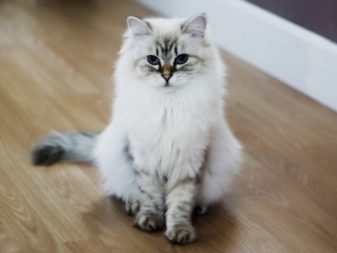
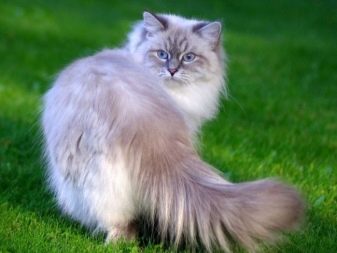
How to choose?
Knowing the characteristics of certain breeds does not mean that you can calm down and stop studying the problem. To choose a beautiful kitten with green eyes for an apartment or for a house, you need to familiarize yourself with other subtleties. It is required to check whether there is enough space in the house for the breed you like. Also, with all the importance of appearance, the cat should not be given exceptional importance. A very important role is played by the intellectual characteristics and fidelity of the animal. Need to find out:
- who is a little friendlier;
- who loves water more;
- who produces a minimum of allergens.
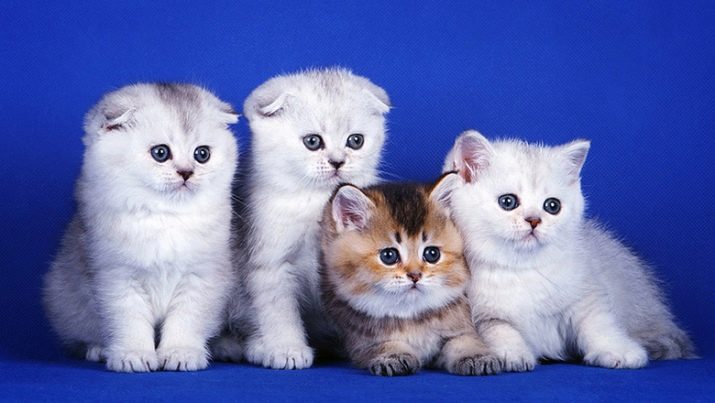
It is necessary to be safe from an allergic reaction even when it was not there before. Sometimes such a pathology is played out suddenly. Sometimes it’s worth even passing special tests in advance. You need to look at the length of the hair of the candidate for pets. The shorter it is, the less the risk of tangling.
Chasing too short hair is not always reasonable. Sometimes, because of it, the animal will freeze on cold and damp days. Connoisseurs recommend asking for a cat that has attracted attention. If he resists or is simply indignant, it is not necessary to force obedience to force. Goodwill test - stretching a fist towards the cat. In this way, trainers reproduce intraspecific greeting.
The cat rubbed her head in hand - this means she saw a friend in a new person. But looking to the side, especially retreating back means hostility or unwillingness to get acquainted. But sometimes you just need to wait a while and help develop the right habit. They do exactly the same if the cause of distrust is fear of strangers and strangers.
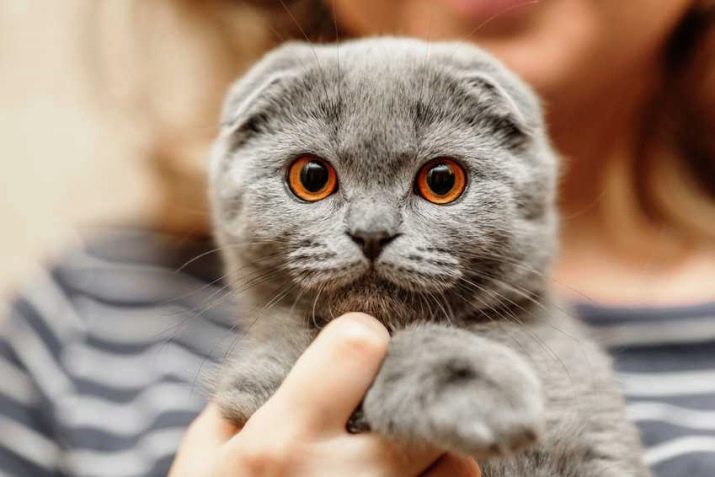
Be sure to pay attention to the health of the animal. It is checked from head to tip of tail. Normally, the eyes should shine and not contain secretions. If something stands out from the nose, this is also a sure sign of trouble. The same can be said about:
- sneezing
- halitosis from ears;
- damage to the coat;
- wheezing
- diarrhea.
Experienced people are advised to require veterinary documentation for the animal so that all vaccines and tests taken are reflected there. A cat from a shelter can be taken only if there is a certificate of a cat immunodeficiency test. As soon as the animal is bought, taken from hands or taken from the shelter, it is worth immediately visiting the veterinarian again. And you need to choose only a well-trained specialist.
Taking away the future pet in the shelter or at the breeder, you need to come in the morning and look - then it will become clear what the true behavior of the cat is.


In the afternoon, especially in the evening, fatigue or contact with rude people can provoke excessive aggression. Even qualified specialists will not be able to recognize whether it is alluvial or not. Choosing a specific breed, you will also have to study a maximum of sources about:
- animal temperament;
- nuances of care and disinfection;
- nutrition features;
- probable veterinary problems and methods for their prevention.
About the diversity of cat breeds, see the next video.
